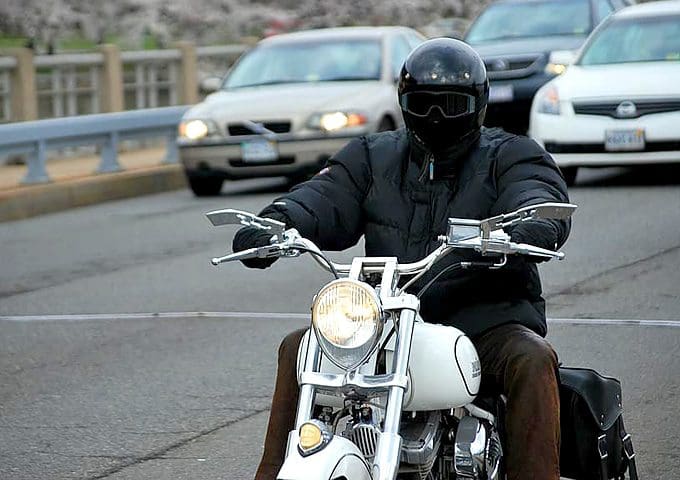words Alexa Wang
Most people do not enjoy rush hour traffic. The congested four-lane highways and heavily congested roads are far from pleasant on even the best of days.
If you are a motorcyclist, you may have been tempted to engage in lane splitting during these times, zipping between different traffic lanes, until the open road is finally in sight. While countless motorcyclists view lane splitting as a safe and “common sense” means of navigating the road, what do the experts say?

What is Lane Splitting?
Occasionally referred to as white lining, stripe riding, or lane filtering, lane splitting is a practice where a motorcyclist rides between two lanes of slow or heavy traffic. To clarify, the motorcyclist is traveling the same direction as the other vehicles, not opposing. Lane splitting allows motorcyclists to pass on the white diving lines at higher speeds. Proprietors of lane splitting argue that the practice helps decrease congestion in urban regions, particularly for those who endure high levels of traffic density and lengthy commute times. However, lane splitting is not without its inherent risks.
Is Lane Splitting Legal in Florida?
Currently, California is the only state where lane splitting is completely legal. In Utah, lane splitting is legal to a certain extent. However, outside of those two states, lane splitting is prohibited or not addressed at all. An experienced motorcycle accident lawyer can explain how breaking the rules of the road, even if you believe it is for your own safety, can impact an insurance claim or lawsuit.
As an extension, in the state of Florida, lane splitting is illegal. If a motorcyclist were to be pulled over by a law enforcement agent, the rider may potentially receive a ticket for lane splitting. Additionally, as lawyers from Burger Law explain, in case of an accident caused by other vehicles, this could also potentially affect the motorcyclist’s ability to file a personal injury claim. So whether you are a resident of Florida or just passing through, it’s best to avoid lane splitting to stay within the legal boundaries and ensure your safety.

Is Lane Splitting Safe or Dangerous?
While there is apprehension surrounding lane splitting, new studies show that the practice may be safer than initially believed. According to a new study by the University of California Berkley, motorcyclists who engage in lane splitting during heavy traffic were significantly less likely to be rear-ended than other motorists. In fact, riders that engaged in lane splitting were almost half as likely to be rear-ended compared to their non-lane splitting counterparts. Also, approximately 81 percent of lane splitting motorcyclists wore a full-face helmet, which was more often than their non-lane splitting opposites. Furthermore, these motorcyclists were less likely to suffer head and torso injuries. Separately, the research showed that lane splitting was safe when practiced in traffic that moved at 50 mph or less. Additionally, the motorcyclist should not surpass the speed of surrounding vehicles by 15 mph. Although there are benefits to lane splitting, it is not without its inherent risks.
A Consumer Report survey found that even though the majority of those who lane split have never experienced a vehicular accident due to lane splitting, 14.9 percent of riders have either hit a vehicle or been hit themselves. Although they have not been involved in an accident, approximately half of motorcyclists reported that they almost hit a vehicle. This almost accident can be attributed to lane splitting’s very nature; it is often a tight squeeze between cars. Of those who have been in a lane splitting related accident, 34.6 percent report that they struck a side mirror, 11.1 sustained minor injuries, and 9.9 percent experienced severe injuries.
Bottom line: While lane splitting can help prevent injuries, fatalities, and rear-end accidents, there are still dangers associated with the practice. Furthermore, lane splitting is not legal in the majority of the United States.






